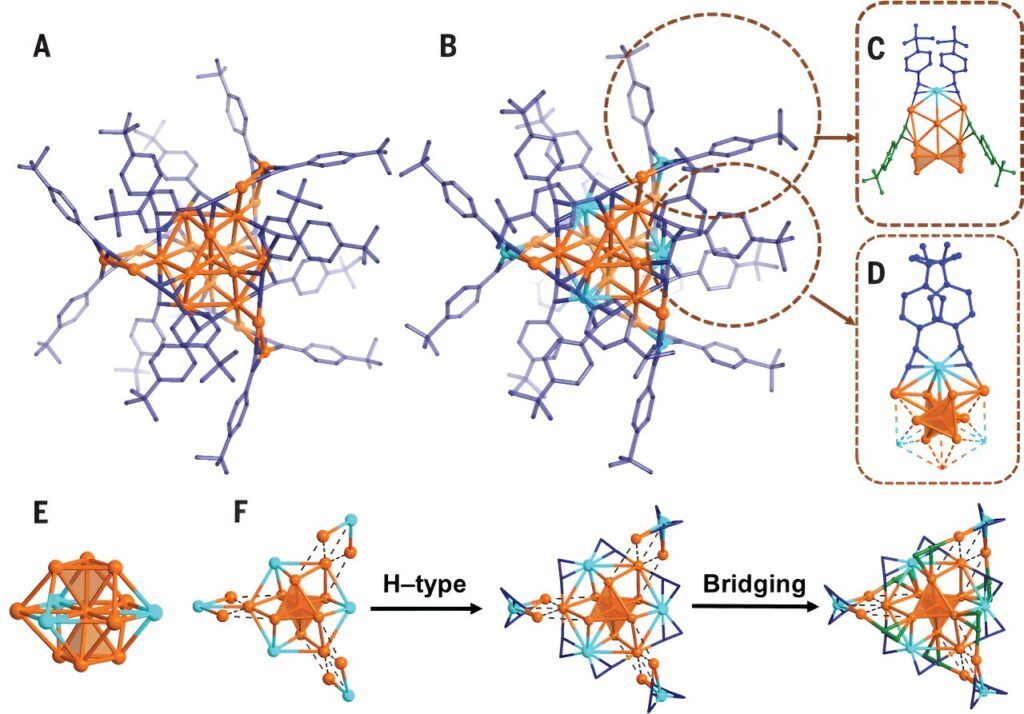A research team has achieved near-unity room-temperature photoluminescence quantum yield (PLQY) (>99%) in the near-infrared (NIR) emission of metal nanoclusters in solution. Their work is published in Science.
Gold nanoclusters (Au NCs) as NIR-emissive materials hold potential in biomedical applications. However, the PLQY of Au NCs in the NIR region is typically low, often less than 10%. To address this problem, researchers synthesized Au22(tBuPhC≡C)18(Au22) and its copper-doped counterpart, Au16Cu6(tBuPhC≡C)18 (Au16Cu6), to study their photophysical properties.
Single-crystal X-ray diffraction analysis revealed that Au22 and Au16Cu6 share similar structures. Au22 showed an emission peak at 690 nm and Au16Cu6 at 720 nm. The absolute PLQY of Au22 and Au16Cu6 in air were 9% and 95%, respectively.
In the deaerated solution, the PLQY of Au16Cu6 reached 100%, measured by both absolute and relative methods. Time-correlated single-photon counting measured the photoluminescence lifetimes of Au22 and Au16Cu6 to be 485 ns and 1.64 μs, respectively.
Further investigation of NCs’ excited-state dynamics through transient-absorption spectroscopy revealed that both NCs’ luminescent states originated from the triplet state (T1), with distinct dynamic processes observed in femtosecond transient-absorption spectroscopy. Under 380 nm excitation, Au22 showed a slow rise of 148 ps, while Au16Cu6 showed a rapid relaxation of 0.5 ps.
Triplet sensitization experiments confirmed that these processes are attributed to ultrafast intersystem crossing (ISC) from singlet state (S1) to T1. Due to copper doping, Au16Cu6 has a smaller ∆Est, significantly accelerating its ISC rate. As a result, Au16Cu6 ultimately showcases PLQY close to 100%.
The approach to achieve near-unity PLQY could enable the development of highly emissive metal cluster materials. Specifically, this work demonstrates that near-unity PLQY can be attained with an alloy of gold-copper nanoclusters even in solution at room temperature, which will enable applications ranging from biological imaging to luminescent devices.
The research team included Prof. Zhou Meng’s group from the University of Science and Technology of China of the Chinese Academy of Sciences (CAS), collaborating with Prof. Wang Quanming’s team from Tsinghua University.
Provided by
University of Science and Technology of China


